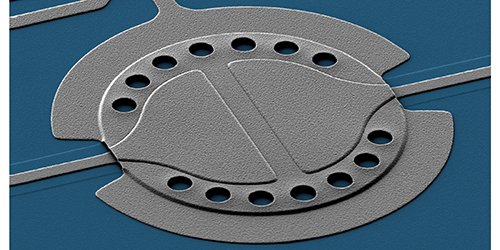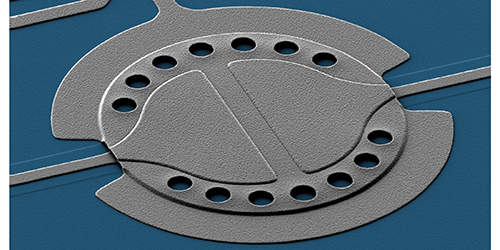Tiny Oscillator Works as Photon Changing Room
Quantum frequency conversion involves taking in a quantum signal, such as a single photon, at one frequency and spitting it out at a different frequency. Certain devices, such as nonlinear crystals, can perform this operation but suffer from low efficiency and/or high noise. A new optomechanical technique uses a tiny oscillator to change microwave photons into vibrations (phonons) and then back into microwave photons of a slightly different frequency. Experiments show that the device has a high efficiency and extremely low noise.
A prime application for quantum frequency conversion is in a quantum network. For example, visible photons used in a quantum memory device might be down-converted to infrared frequencies, which are better suited for fiber transmission. The trick is to make this conversion without losing the quantum information stored in the light.
John Teufel and his colleagues at the National Institute of Standards and Technology, Colorado, have demonstrated a new frequency conversion technique. At the heart of their optomechanical device is a mechanical oscillator made from a plate capacitor. One plate of the capacitor is free to oscillate, while the other plate is coupled to two different microwave cavities with slightly different frequencies (8.89 and 9.93 GHz). To reduce noise, the oscillator is cooled to its motional ground state. An incoming microwave signal at one cavity frequency excites phonons in the oscillator, and these phonons excite outgoing microwaves at the other cavity frequency with 95% efficiency. The converter works in both directions at a rate of photons per second, which is about a factor of 100 better than superconductor-based conversion devices.
This research is published in Physical Review Letters.
–Michael Schirber





